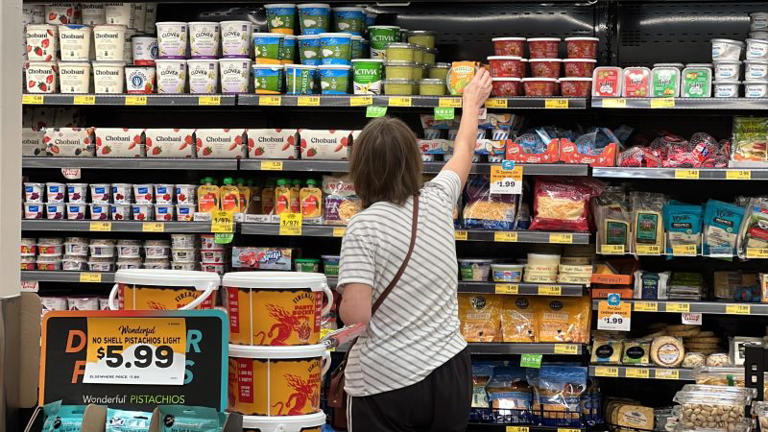John Furner, the U.S. CEO of Walmart, recently addressed the persistent inflationary pressures affecting consumer sentiment and economic data, particularly in the realm of grocery prices. Speaking at the National Retail Federation annual sales forecast event, Furner highlighted the challenge posed by “stubborn inflation,” noting that food prices, in particular, have experienced notable increases in recent years.
Furner emphasized that the sustained rise in consumer prices has presented shoppers with difficult decisions regarding their purchasing habits, underscoring the impact of inflation on household budgets. Despite his concerns about inflation, Furner also shared a positive outlook on the state of supply chains, noting significant improvements compared to previous years when pandemic-related disruptions severely constrained supply amid surging consumer demand. These enhancements in supply chain efficiency have helped to alleviate some inflationary pressures, although the inflationary environment has persisted.
Recent data has shown that while annual inflation has edged up to 3.2%, indicating ongoing challenges in controlling rising prices, there has been a notable slowdown in food inflation over the past year. Nevertheless, grocery prices have continued to climb, with Americans now paying over 25% more for groceries compared to 2019. Importantly, the rate of increase in grocery prices has outpaced overall inflation, highlighting the significant impact on consumers’ purchasing power.
While certain items like eggs and milk have experienced price decreases since the peak of inflation, a widespread decline in prices is unlikely and not necessarily desirable. Furner’s remarks shed light on the complex dynamics at play within the retail sector, where inflationary pressures and supply chain resilience intersect to shape consumer behavior and market trends. As stakeholders navigate these challenges, the need for adaptive strategies and continued vigilance in managing inflation remains paramount in sustaining economic stability and consumer confidence.
On Wednesday, Federal Reserve officials opted to maintain interest rates at a 22-year high, a decision driven by persistent inflation levels that have exceeded the Fed’s 2% target rate. Fed Chair Jerome Powell, in a news conference explaining the decision, indicated that while rate cuts are anticipated “at some point this year,” the exact trajectory remains uncertain.
Despite signs of inflation easing, questions linger as to why prices have not reverted to previous levels. Concurrently, several economic indicators have defied expectations, painting a mixed picture of the current economic landscape. Notably, the U.S. economy added a surprising 275,000 jobs last month, following an addition of 229,000 jobs in January. Although the unemployment rate inched up to 3.9% in February, it remains near historic lows, and wages have consistently outpaced inflation over the past year.
However, despite these positive developments, consumer sentiment regarding the economy remains subdued, defying expectations based on the prevailing economic data. Former U.S. Treasury Secretary Larry Summers and other prominent economists have suggested that traditional economic metrics, such as the Consumer Price Index, fail to fully capture the impact of higher interest rates on Americans’ economic well-being.
Summers and his colleagues argued in a recent working paper that consumers factor in the cost of borrowing money when assessing their economic health, a consideration often overlooked by economists. This disparity in perspectives may help explain the disconnect between consumer sentiment and economic indicators.
In light of these factors, the National Retail Federation (NRF), the largest retail trade group in the nation, announced its forecast for U.S. retail sales, anticipating a growth rate of 2.5% to 3.5% this year. While this projection reflects a slight decrease from the 3.6% annual sales growth observed in 2023, it underscores the continued resilience of the retail sector amid evolving economic conditions.

